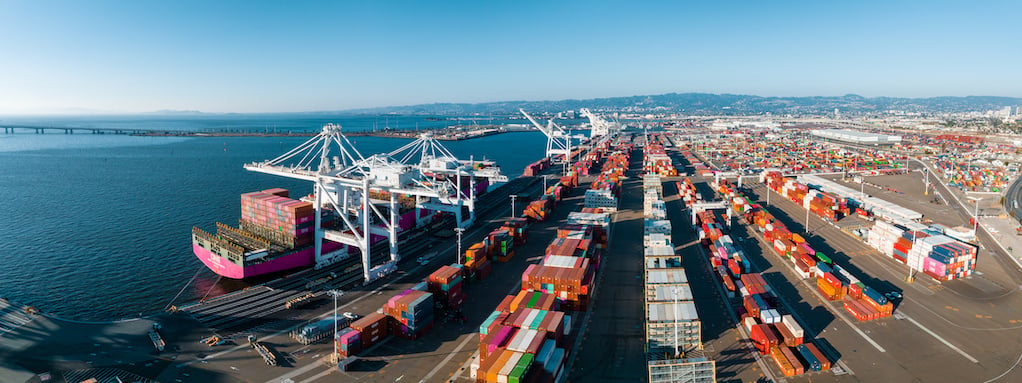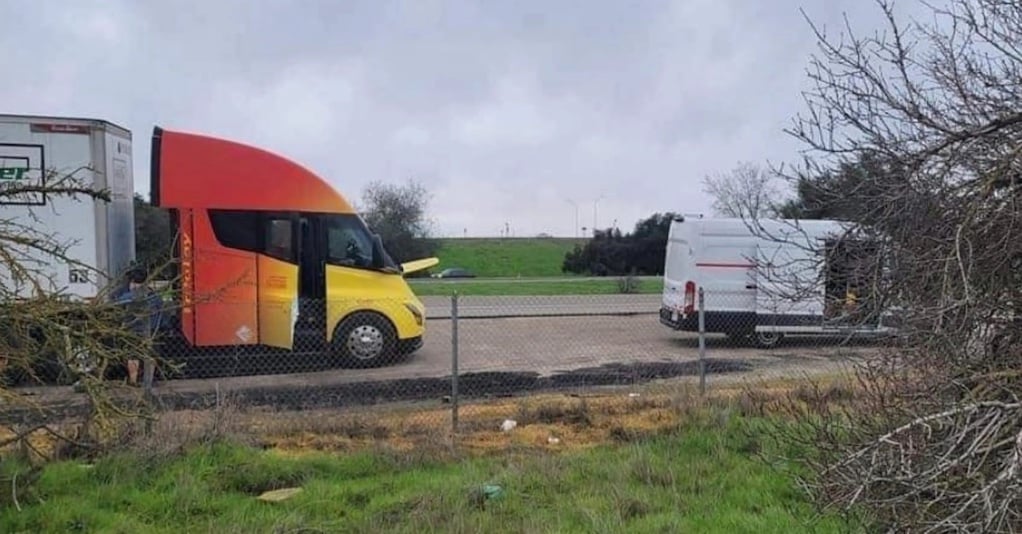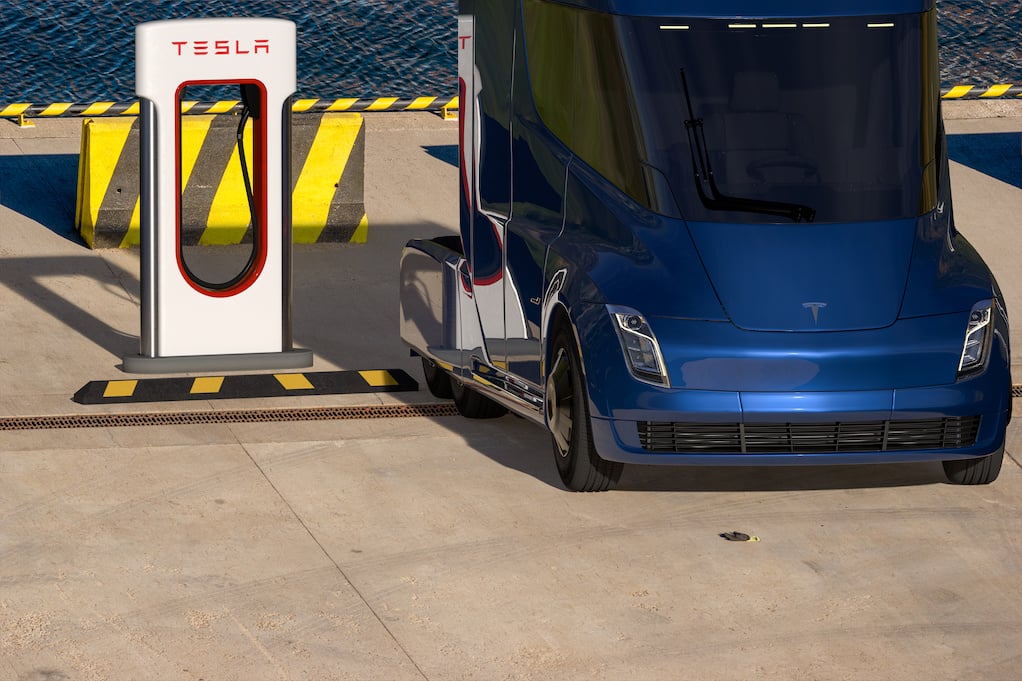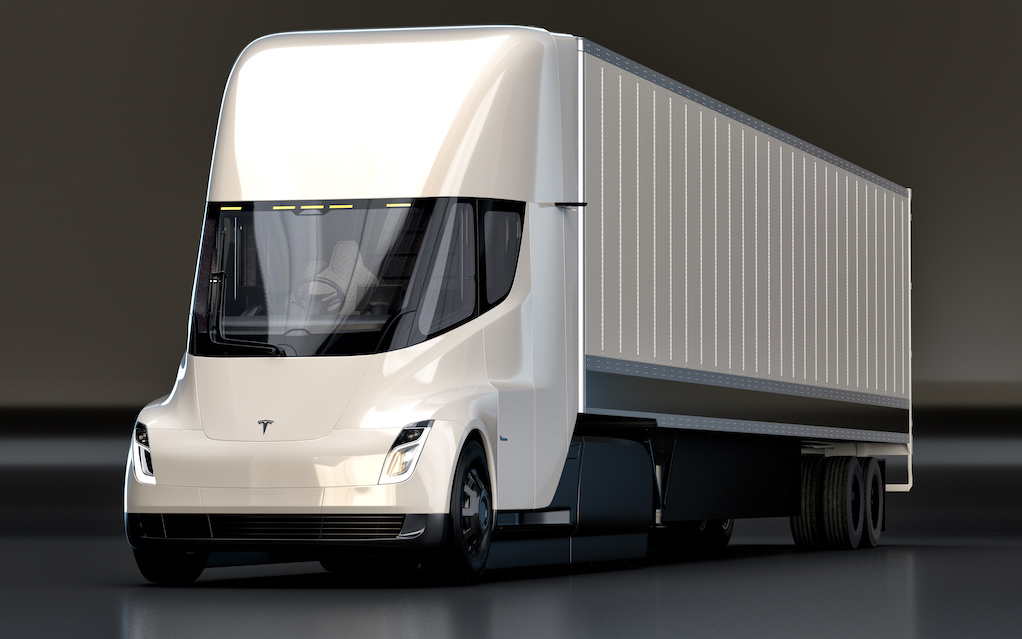Tesla unleashed its first fleet of semi-trucks this year, garnering gasps from industrial tenants across the country. Because with the sheer power required, the Tesla semi has been more of a myth than a reality. It also has implications on the future of the warehouse industry because with new regulations and technology, comes the responsibility to adapt.
The evolution of warehouse and industrial space has been a much-debated topic. For commercial tenants, it's a top of mind concern. EV's represent a massive shift from the way things are currently done in warehouse facilities and to accommodate them is an uphill battle. This is even more true as the existential threat of climate changes closes in on the commercial real estate industry. Warehouses and the trucking that keeps them in business are significant sources of greenhouse emissions. But as the tide turns away from carbon-based natural gas, EV's are appearing as the answer.
So, read on. We’ll walk you through the latest evolution in both warehouse space and the CRE war for carbon neutrality.
Cracking Down on Trucking Emissions
The warehouse industry is the backbone of civilized, capital society. And what’s the backbone of the backbone? The trucks that ship our products to and from distribution centers, stores, and anywhere else they need to go before to reach us.

But, as our society gradually modernizes to accept environmental standards, it’s only about time that the trucking industry must be reckoned with. Because despite comprising a relatively small portion of the vehicles on the road, trucks are responsible for a vast majority of the carcinogenic diesel particulate matter emitted. In fact, according to Elon Musk, 1% of vehicle production is for trucking while they are the culprit behind 20% of the total emissions and a third of the total particulate emissions.
Of course, these findings have put diesel trucking on borrowed time as the CRE field experiences a greater push to sustainability. And the condemnation has already begun.
|
The California Air Resources Board is looking to close the state’s borders to diesel trucks by the year 2035. |
While this is read by many as an aggressive, early move, it may not be too far off. The Commercial real estate industry in general has already been victim to a growing slate of environmentally conscious regulations. There is an all-around push to carbon neutrality, and this can’t be achieved without the role that trucks play.
With California playing a more offensive role, it will shape the behavior of the rest of the country’s heavy-duty industries.
According to Craig Fuller, CEO Freight Waves, “California is the epicenter of North American import and export supply chain. So, if California forces the industry to go carbon neutral and eliminate the internal combustion engine, automotive manufacturers have zero recourse against that. They have to do this, because if they don’t, they won’t be able to sell vehicles in one of the most important markets in the world.”

The Movement to Renewable Energy
Electronic-based trucking is the proposed solution to the movement against diesel. And who is on the forefront? Tesla, of course.
Back in 2017, Elon Musk first announced the new line of Tesla Semi-Trucks. Flash forward to five years later, and they’re finally becoming a reality.
The first fleet of Tesla semis is hitting the road in collaboration with PepsiCo. They are poised to travel a 500-mile radius at highway speed, carrying maximum weight... Sound too good to be true? Well, maybe for now.
Issues with Electronic Semis
Electric trucks are still in their infancy and accordingly many do not yet see them as commercially viable.
The suggested total-war flip from diesel has CFOs, government reps, and truckers alike frustrated with the scale of such an undertaking. Building the infrastructure that supports electric fleets is a once-a-century project likened to the creation of the railroad and interstate highway system.
Currently, the lack of charging stations is perhaps the most significant obstacle in the switch to electric. Because standard charging stations won’t cut it. A standard electronic truck weighs about 80,000 pounds. This demands immense power, while also limiting the total weight carried in cargo.
|
“If you have 20 semi-trucks charging all at one time, that’s almost the amount of power it would take to power 20 big box stores. Think of that kind of scale.” Neha Palmer, CEO of Terawatt |
Because of the massive weight, trucks cannot currently charge efficiently. Charging takes time and, in an industry, where, time is money, this represents a major challenge. Chargers need to be built to provide fast, efficient power. Improper charging risks extreme productivity slowdowns, accidents, or worse.
Further compounding this issue is the public reports that Tesla semis can’t handle the weight or distance originally promised. Trucks have been spotted breaking down roadside. This is quite a hard pill to swallow for the cost of the trucks.
 Broken down Frito-Lay Tesla semi truck
Broken down Frito-Lay Tesla semi truck
The Cost Benefit of Electronic Trucks Isn’t Settled Yet
CNBC estimated that each Tesla-semi truck would retail for around $180,000. At over double the expense of a diesel-based truck, of course a CFO would have a hard time believing an entire fleet swap is financially feasible.
However, while electric trucks may be a higher initial investment, the total cost benefit may supersede diesel fleets. According to CNBC, each mile traveled with diesel fuel is 20% more expensive than electric energy.
 Image Source: Tesla
Image Source: Tesla
Electric is a more affordable energy source. It also allows companies to escape the volatility of fuel pricing and harsh quarters that come with price upswings. So, in terms of long-term savings, electric trucks may well be worth it. This is especially true when you consider how much more upkeep diesel trucks demand, “The big cost savings that a lot of people are seeing as they transition to EVs, is the amount of maintenance is significantly lower than traditional vehicles.”
Electric Semi Trucks in Action
All that being said, companies have had no choice but to give the transition to electric fleets a good try. With the pressure building on commercial real estate facilities to cut emissions, it’s a viable, albeit expensive option to reduce the overall carbon footprint.
Take for instance PepsiCo’s Modesto Facility for their Frito-Lay products. In the past few years, the company has worked in collaboration with the California state government and Tesla to cut 91% of their greenhouse gasses through a transition away from diesel to electric.
This was no easy task. The company had to overhaul their facilities’ operations. This included equipping their warehouse with a new state of the art charging system that could accommodate the power strain of charging over a dozen Tesla semis.

Frito-Lay installed four mega chargers, each capable of charging 750 kilowatts. Local utilities were not previously sufficient, and the infrastructure team had to bring additional power to the site. Such a system would take a single truck about an hour to charge with 400 miles of range.
The temporal success of their operation is proving to others that it is possible. Frito-Lay was also able to negate their total cost, matching incentives and grants endowed by the California Air Resource Board.
New Concerns for Warehouse Tenants
Going forward, corporate tenants everywhere should be prepared for the ubiquity of EVs. It’s already been asserted that offices and corporate spaces should include EV chargers. Now, the push is moving on to the warehouse industry.
While the capability didn’t exist before now, Electric Semi-trucks are set to be the new future of industrial productivity and sustainability. Corporate tenants need to consider how this will implicate them going forward. Not only this, but it will change the scope of warehouse power entirely. If, more like when, electronic trucks take over for diesel, facilities will need the infrastructure to support them. This raises a whole new world of considerations for corporate tenants like who would be responsible for build-out, maintenance, and the sheer cost of running the extreme power required.
Do we need EV’s to compete? Will our company be penalized if we don’t jump on board? How do I build the infrastructure in my facility?
The answer to these and many other questions will emerge through evolution, but in the meantime all you can do as a corporate tenant is prepare yourself.If EV trucks weren’t already on your radar, they should be now. Don’t wait until you’re backed into a corner by regulations to forcibly adopt new technology. Tenants who adapt can remain on the cutting-edge, save in fuel costs over time, and get a leg-up over their competition.
Keep Your Warehouse on Track with a Tenant Rep
Positioning yourself and your warehouse for success means staying on top of market trends. For busy tenants, constantly evaluating their leases in conjunction with the market can be an impossible task. This is especially true since the technological evolution appears to be getting more rapid by the day.
Luckily, The True Tenant Reps™ at iOptimize Realty® can keep track for you. As experts in conducting due diligence for optimal warehouse properties, we have 30+ years of experience finding the best warehouses for the best price. Now, we see where the future of warehouse is going and want to help corporate tenants stay ahead of the curb. EV's will only likely become more important in your commercial real estate. But, when looking for your optimal warehouse, there's a lot more considerations.
We want to share the tips and tricks we've developed to empower corporate tenants to find the best warehouse for the best price. We poured our industrial real estate due diligence into the course and you'll also receive a checklist of the 70+ factors you need to consider when touring a warehouse. Enroll now.








